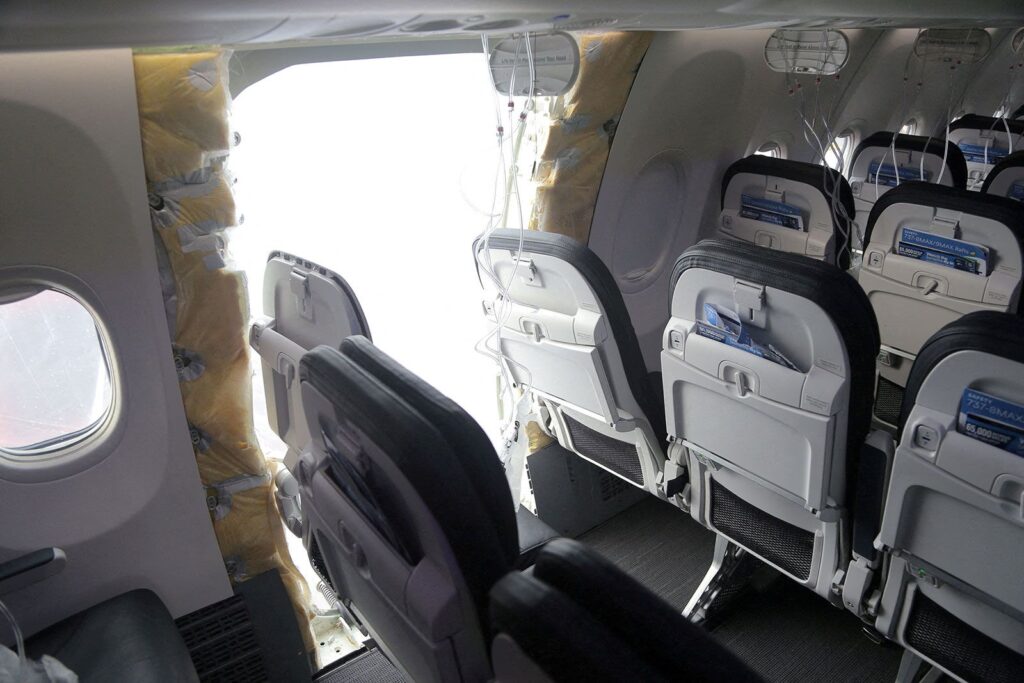Boeing Values

Sure, Boeing is an absolute disaster that is killing people (though not on American owned flights so we didn’t pay attention to it), but at least its executives have prioritized what really matters–unionbusting.
Boeing’s largest factory is in “panic mode”, according to workers and union officials, with managers accused of hounding staff to keep quiet over quality concerns.
The US plane maker has been grappling with a safety crisis sparked by a cabin panel blowout during a flight in January, and intense scrutiny of its production line as regulators launched a string of investigations.
Its site at Everett, Washington – hailed as the world’s biggest manufacturing building – is at the heart of Boeing’s operation, responsible for building planes like the 747 and 767, and fixing the 787 Dreamliner.
One mechanic at the complex, who has worked for Boeing for more than three decades, has claimed it is “full of” faulty 787 jets that need fixing.
Many of these jets are flown from Boeing’s site in South Carolina, where the company shifted final assembly of the 787 in 2021 in what was characterized as a cost-cutting measure.
“There is no way in God’s green earth I would want to be a pilot in South Carolina flying those from South Carolina to here,” the mechanic, who requested anonymity for fear of retaliation, told the Guardian. “Because when they get in here, we’re stripping them apart.”
Managers at Everett “will hound mechanics” to keep quiet about quality-assurance concerns and potential repairs, the mechanic alleged, emphasizing speed and efficiency over safety. He added: “Boeing has to look in the mirror and say: ‘We’re wrong.’”
…
Some workers at Everett have characterized the shift of 787production from Washington to South Carolina as an anti-union move: whereas Washington has a union for mechanics, Boeing’s plant in South Carolina is non-union, and was the site of a contentious union-organizing drive several years ago.
Another Boeing employee at Everett, who also requested anonymity, drew a contrast between productivity at the Washington state complex and the North Charleston factory in South Carolina, where final assembly of the 787 was moved but where no union mechanics were hired.
“We would build 10 to 12 planes a month, while South Carolina would build just over two, almost three a month,” they said. “I don’t see them ever getting to 10 a month.”
A “very robust union-containment strategy” at Boeing is partly responsible for the company’s broader safety problems, said Rich Plunkett, director of strategic development for the Society of Professional Engineering Employees in Aerospace (Speea), IFPTE Local 2001, which represents 17,000 employees at Boeing and Boeing supplier Spirit AeroSystems.
In addition to not hiring union mechanics in South Carolina, Boeing has significantly reduced the number of workers who write instructions for machinists in recent years, through outsourcing, voluntary resignations and layoffs.
“The existing employees are not the enemy,” said Plunkett. “They’re your solution. And you need to engage them collectively.
“Boeing has to implement meaningful non-retaliation policies, demonstrate by walking the talk, and quit threatening their workforce [that] if they can’t do everything they can cheaper that they’re going to send the work abroad. Because Boeing’s globalization is continuing, if not expanding, in the midst of Boeing telling the free world they’re changing the culture.”
Some veteran union employees at Boeing draw a link between its current issues and a move by the company more than two decades ago to introduce “team leader” managers, replacing a previous system whereby the most senior, experienced factory workers were in charge.
“The team leader isn’t picked by his skill on the airplane – he is picked by his relationship with another manager or another person,” said the mechanic. “Now we don’t have team leads who know what’s up.”


